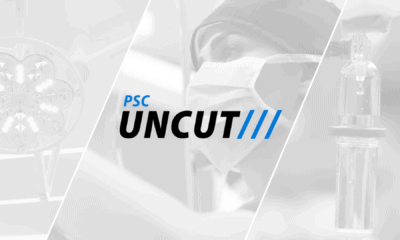Fat grafting is hot these days. Through the procedure has actually been around for decades, it didn’t start to gain prominence until the early 1990’s. Since then, plastic surgeons have routinely used fat to increase volume in the face, hands, buttocks, hips and breasts.
Recently, fat grafting has really hit the media highway, but is it really worth all the hype? Board certified plastic surgeons Dr. Adam Hamawy of Princeton, NJ, Dr. Richard J. Restifo of Orange, CT and Dr. Dustin Reid of Austin weigh in on the pros and cons of fat grafting when it comes to the breasts and the face.
What is Fat Grafting?
Fat grafting is a surgical technique in which fat is transplanted from one area of the body to another. First, the plastic surgeon removes fat via liposuction from an area of the body where a patient has too much. For most patients, these areas include:
- stomach
- outer thighs
- buttocks
- love handles
Next, the fat is processed and then re-injected into an area of the face or body that needs volume improvement. The treatment is ideal for:
- filling in fines lines & wrinkles of the face
- improving body contour
- making areas larger, such as the breast or buttocks

Breast Augmentation with Fat Grafting
When it comes to the breast, it is really important that the plastic surgeon appropriately manage a patient’s expectations. “The thing that I hate the most in my office is a disappointed patient,” says Dr. Restifo. And, reliably, that is what he faces with fat grafting to the breast patients. “Fat grafting to the breast as a concept has been around for at least three decades and it hasn’t really caught on. Why not? Because it’s not a great thing.”
Even so, Dr. Hamawy is finding that more and more patients are asking for fat grafting to the breast. It’s been touted as a ‘natural’ way to increase volume sans implant. And though he does see “some improvement” with the technique, he, too, finds that he needs to be very careful about a patient’s expectations so that they aren’t disappointed with their results.
With his potential breast augmentation patients, he will show the patient what she will look like with fat grafting to the breast via 3D imaging. After seeing the image, a third of the patients will say, “Yes.” A third will say that they would rather have a breast implant, and a third will say no to augmentation period. “In terms of making a breast bigger, I think there are just much better ways to do it than fat,” shares Restifo.

Fat Grafting to the Face is More Successful
“[Fat grafting to the face is] a totally different story,” says Dr. Restifo. Filling in fines lines and wrinkles and rejuvenating the face requires a much smaller volume of fat than augmenting the breasts – this is key. Because of the increased precision with significantly decreased amounts of fat, surgeons are able to better estimate how much is needed, leading to great outcomes. It’s not like the whole sale transfer of fat that is needed to augment the buttocks or breasts.
Furthermore, the results from fat grafting to the face are permanent, unlike injectable fillers which need to be touched up every 6 months to a year. There is also a very high concentration of stem cells in fat. While the benefits of these stem cells are only just beginning to be explored, but it’s a topic that has plastic surgeons very excited.
Pros & Cons of Fat Grafting
Besides being full of stem cells that have the ability to repair and even regenerate damaged tissue, fat grafting has many other benefits. These include:
- fat is completely natural, so there is no risk of an adverse reaction
- results from fat grafting are permanent
- fat grafting is versatile and can be used on almost any area of the body
There is, however, one main con. The results from fat grafting are much less predictable than the results from filler or a breast implant. The reason for this is that not all of the injected fat “takes”; a certain percentage of the cells will die off. This is one of the many reasons why it is very important to see a board certified plastic surgeon with a lot of fat grafting experience. In many cases, the patient may need additional treatments in order to achieve his or her final result.
Fat Grafting Techniques Have Improved
The fat grafting technique has definitely improved over the last 20 years, making it a much better and more effective procedure over all. Also, surgeons have figured out that different areas of the face and body require different fat grafting techniques. Dr. Reid agrees that surgeons have gotten better with their fat grafting techniques and that it’s a good procedure that “is here to stay.”










Facebook
Twitter
Instagram
YouTube
RSS